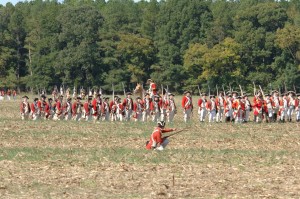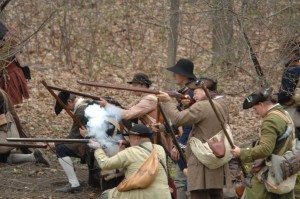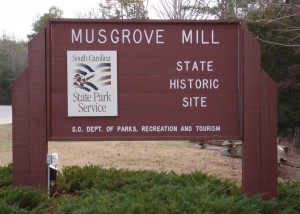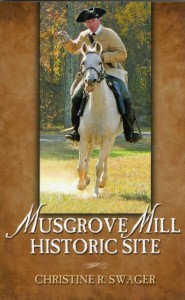 Welcome to my blog, and Happy Fourth of July! The week of 2 July – 9 July, I’m participating with more than one hundred other bloggers in the “Freedom to Read” giveaway hop, accessed by clicking on the logo at the left. All blogs listed in this hop offer book-related giveaways, and we’re all linked, so you can easily hop from one giveaway to another. But here on my blog, I’m posting a week of Relevant History essays, each one focused on some facet of the American War of Independence. To find out how to qualify for the giveaways on my blog, read through each day’s Relevant History post below and follow the directions. Then click on the Freedom Hop logo so you can move along to another blog. Enjoy!
Welcome to my blog, and Happy Fourth of July! The week of 2 July – 9 July, I’m participating with more than one hundred other bloggers in the “Freedom to Read” giveaway hop, accessed by clicking on the logo at the left. All blogs listed in this hop offer book-related giveaways, and we’re all linked, so you can easily hop from one giveaway to another. But here on my blog, I’m posting a week of Relevant History essays, each one focused on some facet of the American War of Independence. To find out how to qualify for the giveaways on my blog, read through each day’s Relevant History post below and follow the directions. Then click on the Freedom Hop logo so you can move along to another blog. Enjoy!
 Relevant History welcomes back Dr. Christine Swager, who writes about actions in the south during the Revolutionary War. In the six books she has published, she has covered the militia contributions to the success of the Patriot cause. Although her books are historically accurate, she writes for a general readership, especially teachers and students. She is determined to make history interesting as well as informative. To recognize her work, the Southern Campaigns of the American Revolution awarded her their Lifetime Youth Achievement Award. She is also a recipient of the National Society of the Sons of the American Revolution’s Martha Washington Medal. Look for her on Facebook.
Relevant History welcomes back Dr. Christine Swager, who writes about actions in the south during the Revolutionary War. In the six books she has published, she has covered the militia contributions to the success of the Patriot cause. Although her books are historically accurate, she writes for a general readership, especially teachers and students. She is determined to make history interesting as well as informative. To recognize her work, the Southern Campaigns of the American Revolution awarded her their Lifetime Youth Achievement Award. She is also a recipient of the National Society of the Sons of the American Revolution’s Martha Washington Medal. Look for her on Facebook.
*****
On the hot summer night of 18 August 1780, two hundred armed men left their militia camp on the Broad River in South Carolina, and moved furtively through the area until they reached the road. Then they spurred their horses toward their objective, forty miles south. They were intent on attacking the enemy at Musgrove’s Mill on the Enoree River. An encampment of local Loyalist or Tory militia (settlers loyal to the King) was guarding a hospital site where wounded British soldiers were being housed. The site was at a ford which allowed passage for British troops stationed at Ninety-Six to cross the Enoree River and attack the settlers farther north.
The British wounded at Musgrove’s Mill were casualties of a month of skirmishes in the area north of the Enoree and most of those same Patriot militia who were headed in their direction had inflicted those wounds. Now they would finish the job. They expected to strike at dawn and overwhelm the unsuspecting Loyalist militia.
Who were these determined men? There were three commanders: Col. Elijah Clarke with his Wilkes County Militia from Georgia; Col. Isaac Shelby with his Over Mountain Men from what is now East Tennessee, (although at that time it was Western North Carolina); and Col. James Williams of the Little River Militia in South Carolina with men from other units. Col. Williams and his militia lived south of the Enoree River within a few miles of the British post at Ninety-Six. Their homes and families were threatened. Other locals who lived in the area and shared their concerns joined them.
Pivotal battle, patriot victory
 However, they encountered a Tory patrol so the element of surprise was lost. To complicate the situation, they learned upon arrival that the night before, a contingent of soldiers from Ninety-Six had arrived and was camped at Musgrove’s Mill. Now they were seriously outnumbered by a force of trained, experienced and disciplined British Provincials. With the horses too fatigued from the long ride in the heat to affect a retreat, the Patriots were determined to fight. They threw up a rude barricade on the crest of a hill some distance from the British camp. To lure the enemy within range of their weapons, Capt. Shadrick Inman of Georgia led a small group of horsemen toward the British line and attacked repeatedly. The British crossed the river and moved into a cleared field below the militia line. When they came within range the militia fired. The subsequent battle was one of the most hotly contested that Col. Isaac Shelby reported that he had ever seen.
However, they encountered a Tory patrol so the element of surprise was lost. To complicate the situation, they learned upon arrival that the night before, a contingent of soldiers from Ninety-Six had arrived and was camped at Musgrove’s Mill. Now they were seriously outnumbered by a force of trained, experienced and disciplined British Provincials. With the horses too fatigued from the long ride in the heat to affect a retreat, the Patriots were determined to fight. They threw up a rude barricade on the crest of a hill some distance from the British camp. To lure the enemy within range of their weapons, Capt. Shadrick Inman of Georgia led a small group of horsemen toward the British line and attacked repeatedly. The British crossed the river and moved into a cleared field below the militia line. When they came within range the militia fired. The subsequent battle was one of the most hotly contested that Col. Isaac Shelby reported that he had ever seen.
 Eventually the British were routed, and as they fled, the militia followed pouring shot into the backs of the retreating enemy. The Patriots stopped at the river’s edge to wait for their horses to be brought up, as they intended to force the British back to Ninety-Six and attack that post. As they waited a courier arrived telling them that the British had defeated the Continental Army at Camden on 16 August and had overrun Thomas Sumter’s Brigade at Fishing Creek. They were advised to head north and west as the British would now move more resources into the Back Country.
Eventually the British were routed, and as they fled, the militia followed pouring shot into the backs of the retreating enemy. The Patriots stopped at the river’s edge to wait for their horses to be brought up, as they intended to force the British back to Ninety-Six and attack that post. As they waited a courier arrived telling them that the British had defeated the Continental Army at Camden on 16 August and had overrun Thomas Sumter’s Brigade at Fishing Creek. They were advised to head north and west as the British would now move more resources into the Back Country.
The victors mounted up and headed away from the battlefield leaving on the field sixty-three British dead and ninety wounded, and took with them seventy prisoners. The Patriots lost four men. One, sadly, was the hero Capt. Shadrick Inman. The Battle at Musgrove’s Mill had been a decisive victory with Patriot militia mauling and routing a superior force of British Provincials. It was wise to leave and live to fight another day.
And they did fight another day. Many of these men defeated Major Patrick Ferguson and his men at King’s Mountain, rode with Col. Thomas Sumter when he defeated Lt. Col. Banastre Tarleton at Blackstock’s and stood, shoulder-to-shoulder, at Cowpens and helped General Daniel Morgan defeat a British force commanded by Lt. Col. Tarleton.
However, it all started with the militia engagements in July and August, and, most notably, the Battle of Musgrove’s Mill. Would you not think that the site would have been preserved and revered through the years following the Revolutionary War? That was not the case. The site was abandoned and overlooked for over two hundred years! Musgrove Ford was used for generations, and a bridge was eventually built over the Enoree River at that site. Cotton fields flourished along the Enoree River until the land was depleted and erosion pockmarked the terrain. As people traveled the road, there was little evidence of the great battle that had been fought there.
Saving the battle site from obscurity
 In the late 1990’s, historian Dr. George Fields determined to save the battlefield. “If the participants could march over forty miles behind the British lines to raid a fortified camp, face an enemy twice the size they expected, inflict more casualties on the enemy than in their ranks, and retreat in a forced march for two days to avoid capture behind the lines, we should, could and somehow would do the hard task of saving the battlefield,” said Fields. With the help of local citizens and businesses, he raised money to purchase a large part of the battlefield. Donnie Wilder, State Representative from Laurens County, persuaded the South Carolina Department of Parks, Recreation and Tourism to commit to establishing the property as an historic site. On 5 May 2003, the Musgrove Mill State Historic Site was dedicated—222 years after the battle fought there contributed to the victory of our Patriot forces and the founding of our United States of America.
In the late 1990’s, historian Dr. George Fields determined to save the battlefield. “If the participants could march over forty miles behind the British lines to raid a fortified camp, face an enemy twice the size they expected, inflict more casualties on the enemy than in their ranks, and retreat in a forced march for two days to avoid capture behind the lines, we should, could and somehow would do the hard task of saving the battlefield,” said Fields. With the help of local citizens and businesses, he raised money to purchase a large part of the battlefield. Donnie Wilder, State Representative from Laurens County, persuaded the South Carolina Department of Parks, Recreation and Tourism to commit to establishing the property as an historic site. On 5 May 2003, the Musgrove Mill State Historic Site was dedicated—222 years after the battle fought there contributed to the victory of our Patriot forces and the founding of our United States of America.
This month, when we celebrate the birth of our nation, we might consider the debt owed to these citizen soldiers and honor them. Are there sites in your area that could and should be saved after all these years? If it could happen in rural South Carolina, you might make it happen where you live.
*****
 A big thanks to Christine Swager. She’ll give away an autographed copy of her book, Musgrove Mill Historic Site, in trade paperback format to someone who contributes a legitimate comment on this post today or tomorrow. Delivery is available worldwide. Make sure you include your email address. I’ll choose one winner from among those who comment on this post by Saturday 5 July at 6 p.m. ET, then publish the name of all drawing winners on my blog the week of 14 July. And anyone who comments on this post by the 5 July deadline will also be entered in a drawing to win a copy of one of my five books, the winner’s choice of title and format (trade paperback or ebook).
A big thanks to Christine Swager. She’ll give away an autographed copy of her book, Musgrove Mill Historic Site, in trade paperback format to someone who contributes a legitimate comment on this post today or tomorrow. Delivery is available worldwide. Make sure you include your email address. I’ll choose one winner from among those who comment on this post by Saturday 5 July at 6 p.m. ET, then publish the name of all drawing winners on my blog the week of 14 July. And anyone who comments on this post by the 5 July deadline will also be entered in a drawing to win a copy of one of my five books, the winner’s choice of title and format (trade paperback or ebook).
**********
Did you like what you read? Learn about downloads, discounts, and special offers from Relevant History authors and Suzanne Adair. Subscribe to Suzanne’s free newsletter.

Thank you Dr. Swager for not only describing a pivotal battle I’d never heard of, but also for reminding us that we have an obligation to preserve our history.
It’s wonderful to hear the battlefield was finally recognized and preserved and that a big box store or parking lot wasn’t put there instead.
Linda, I tried to respond before and it may not have gone through so I’ll try again.
You would love Musgrove Mill if you had a chance to visit it. Great green spaces, walking trails along the river, picnicking along the Enoree and kayaking from the site. Great scenery complete with waterfalls. The Visitor Center reminds us that the site was occupied for thousands of years. Early settlers, as well as Paleo-Indians knew a great site when they found it. The park is off I-26, Exit 52, near Spartanburg.
Musgrove Mill:
Timely victory in light of devastation at Camden, Waxhaws, and Charlestown.
Beautiful site, classy name.
Courageous story leading up to, during, and following it.
Dynamic leaders in Shelby, Clarke, and Williams. All with fame and intrigue–Will Graves wrote an excellent biography of James Williams.
Great characters. Shadrack Inman, wow.
Hi Dave,
As you know, I’ve written about Elijah Clarke in HEROES OF KETTLE CREEK, but there is nothing known (that I could find) about Shadrack Inman, other than the fact that he was a member of Clarke’s Wilkes County Militia. There would be a great story there if I could find it!
I liked your words of their “living to fight another day.” That was the caliber of men and women who fought against the British king and his army. Those Patriots never gave up, no matter if it was a defeat or a victory. Those battles were fought in swamps, defending their homes, and on battlefields. Preserving their memories and their sacrifices is the least we can do.
Absolutely. That is why I am unabashedly partial to the militia.
Sheila, in my opinion, someone is courageous when they’re faced with fear and still able to take the correct action. That means that a lot of “ordinary” civilians (patriots, neutrals, and loyalists) during the American Revolution were courageous. Even if they never got caught up in a military action, the acts of surviving and thriving outside of a town presented a daily test of courage. Many people in America today take for granted the fact that they can walk into their back yards and not get mauled by a cougar or caught up in an Indian skirmish.
Always a fan of Dr. Swager, I am taking the opportunity to share this link. As a person who loves Musgrove Mill SHS, I am glad that not only is the battleground now protected, but there is a book dedicated solely to this site.
In addition to the fact that it is an important battle site, it is a beautiful park. I love it and so happy to have had the opportunity to write about it and appreciate the Park Manager, Brian, for helping me with the research.
Thank you, Dawn!
It just goes to show what a determined group of people can accomplish in the face of unfavorable odds. I’ve been able to visit Cowpens and 96, and now I must put Musgrove Mill on my list, especially considering it’s not all that far from my home in Anderson. Would love to read about it in this book before I am able to visit.
You would love Musgrove Mill State Historic Park. It is a beautiful site. Tomorrow, Saturday July 5, Scott Hodges is doing a presentation of back country traders as Edward Musgrove at 10:00. Fee for this is $5.00.
August 18 is the big event with militia encampment and events. SAR will have a program commemorating the event. Plan on hike along the Enoree and a picnic at Horseshoe Falls. Great place for families.
Hope you can visit. Enjoy!
Tracy,
Looks like you are a re-enactor. British Legion? If so, do you know Toni Scotti?
Chris Swager
No,I’m afraid not, though I would love to, as I’m not able to afford it. I’ve never met Tony Scotti, but do I have a copy of his book.
When I wrote The Valiant Died: The Battle of Eutaw Springs, Toni was kind enough to pose for a picture depicting a British Legion member. I have always been indebted to re-enactors for information about the way battles were fought and the activities of camp life. I know re-enactors incur tremendous expense to be authenic. It is easier to join a militia unit as their uniforms and weapons are less expensive. Check out Robert Hall on Facebook. He is part of the militia that supports Musgrove Mill and that might be a group to start with.
Chris Swager
I spent some time as a reenactor with the British Legion. I’m grateful to Tony Scotti for his insights on Tarleton. Those insights helped me make Tarleton a three-dimensional character in Camp Follower. A few readers objected when I didn’t portray Tarleton and the Legion as a band of psychopathic monsters. That just demonstrates how powerful our country’s folklore has become,and how people can overlook the fact that “…in such a vicious war the Patriots had their moments, as well,” as David Neilan points out.
Musgrove Mill seems a prime example of how the Patriots responded to desperate situations. They arrived at the site totally tuckered out, only to learn that Loyalist reinforcements had arrived. They basically had no realistic choice but to fight. The initiative and creativity demonstrated by the battle plan–traits that characterized militia operations more and more as the war evolved–made the difference. If they had tried to fight in the European mold, they would have been routed. This is a wonderful example of how the Patriots outsmarted the British
Is it any wonder that I am partial to the militia? The skirmishes in the Back Country of South Carolina inflicted serious casualties on the British Provincials stationed at ninety-Six. These people were fighting for survival, and there was no turning back. One Commander, Elijah Clarke of Georgia is described by Georgian historian Robert Davis as “almost fatally courageous.” I think that applies to many of the militia.
I cannot imagine being in a situation, where if you fail, you die. I wonder if it was a similar situation in the Pacific during WWII. I read my uncle’s memoirs a couple years ago. He (a captain at the time) clearly stated that in the island-hopping phase, the understanding was “Take no quarter”–I’m talking about both sides. It surprised me that 165 years after the Rev War, the ferocity of warfare seemed to be so similar. Tarleton caught a lot of grief for his Legion’s actions at the Waxhaws in not sparing the sword (or the bayonet), but in such a vicious war the Patriots had their moments, as well.
Absolutely. My father was in WWII with the Canadian forces in North Africa, Sicily and Italy and it was ‘us or them.” Bob was in Plekui in 1965-66, and in Operation Bon Son, I Drong Valley Campaign and Operation Masher. He was with a Combat Aviation Battalion and when they lost a plane they could not retrieve the bodies as they were booby-trapped by the Viet Cong. Nothing has changed much in two centuries.
Dr. Swager, thank you for making it clear the Patriots, in this case the Militia, set a high bench mark that, fortunately, our military men and women have continued to meet or surpass. Thank you for continuing to make the Southern Campaign so factual, readable and fascinating.
As a storyteller I am allowed to be partial. As you know, I admire Francis Marion, Andrew Pickens, and and Elijah Clarke. I think the stories are an important way of letting people know of the sacrifices of these citizen soldiers.
Dear Christine and Suzanne,
Thank you both for sharing this story–I don’t recall reading of this battle before so incredible story!
As for the restoration of the battlefield, I live 20 minutes from Washington’s Crossing, and never realized how spoiled we are here where I live. A friend had gone to Europe and talked of castles and historic places kept from several hundred years ago, so I am always surprised that there is such opposition here to preserving the past from not that long ago.
Thanks again!
Thanks for your comment, Rory. There are likely a number of battle sites that have been paved over or otherwise erased. For example, the remains of several patriots killed in battle lie beneath Lake Marion in South Carolina; before the area was turned into a lake, it had been a swampy battleground. We’re lucky to have Musgrove Mill restored.
Two of the bloodiest battles in the South–the Siege of Savannah and the Battle of Eutaw Springs–have virtually no historic preservation. I understand the site of the failed assault on Savannah of October 9, 1779, perhaps, the bloodiest day in the war for American and French troops, is now a golf course and housing development. Much of the Eutaw Springs battlefield is under Lake Marion. Only a few markers populate the small, poorly maintained lot, that serves as the only physical reminder of Greene’s last “near-victory.” The rest of the site is woods and a housing development.
Dave, since the battle was fought mostly on the high banks and not in the creek area (perhaps Majoribanks retreated through the creek-bed,) only 5-10% of the battle site is underwater. The battle probably spread across an area on either side of the road, through the woods to the cleared (8 acres) where the British were encamped. Boatner published a short account years ago and stated that the battlefield was underwater. Recent research (Baxley, Smith and others) have established otherwise.
Thanks for clarifying, Christine!
A golf course? Ugh. Yeah, I thought it was the Battle of Eutaw Springs that was under Lake Marion, but I was headed out this morning to a speaking engagement and didn’t have time to look it up and confirm it. Every time I drive across the bridge over Lake Marion, I’m reminded that there are patriots buried beneath it.
The land that Dr. Fields was able to purchase had been clear-cut and was portioned off for mobile home sights. His reaction was, “If we can lose a battlefield between Cross Anchor and the Enoree in rural South Carolina, nothing is safe!” Fortunately the locals had an appreciation of the site and many of the participants are buried in the area. Local businesses had owners who were concerned about the possibility of losing it, so it was a collaborative effort of business, industry and private citizens.
My cousin, who grew up in South Carolina, would have enjoyed this post so much. Shall forward to her daughter who had a more peripatetic childhood thanks to the military.
Sadly your comments on lost/forgotten battlefields reflect reality in Virginia and Maryland, where history is lost to malls.
It takes a lot of dedicated people to get things done. We were lucky that the locals cherished the Musgrove Mill site and, when the opportunity came to save it, they rallied around the effort with money and pressure on officials. It would be more difficult now when profit seems to drive everything. There is little profit for the people who saved MM but the satisfaction that it is now recognized seems to be enough.
Thanks for passing along this post to your cousin’s daughter, Liz.
It’s such a shame that we’re in a hurry to lay down concrete everywhere.